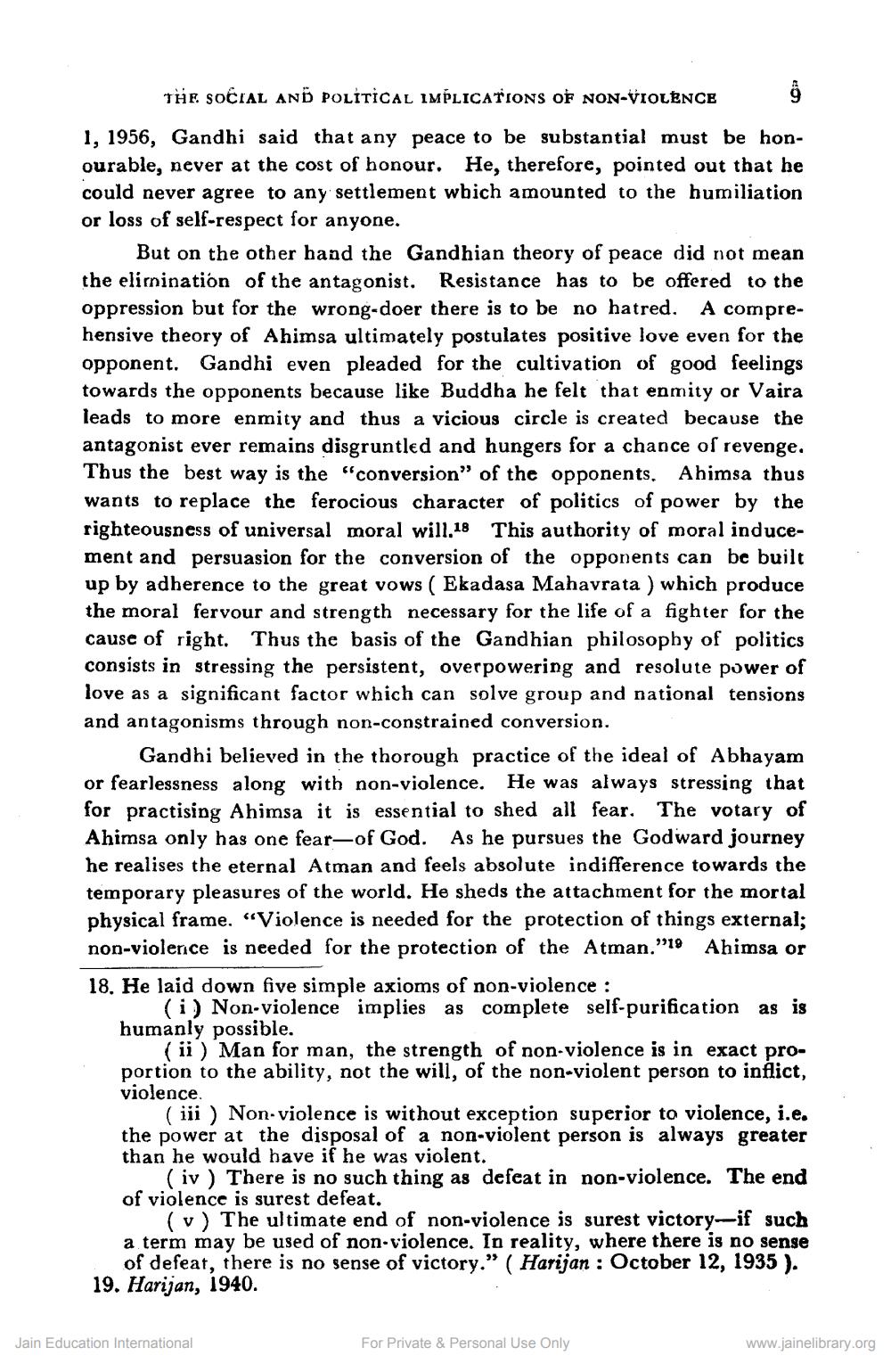________________
THE SOCIAL AND POLITICAL IMPLICATIONS OF NON-VIOLENCE
ĝ
1, 1956, Gandhi said that any peace to be substantial must be honourable, never at the cost of honour. He, therefore, pointed out that he could never agree to any settlement which amounted to the humiliation or loss of self-respect for anyone.
But on the other hand the Gandhian theory of peace did not mean the elimination of the antagonist. Resistance has to be offered to the oppression but for the wrong-doer there is to be no hatred. A comprehensive theory of Ahimsa ultimately postulates positive love even for the opponent. Gandhi even pleaded for the cultivation of good feelings towards the opponents because like Buddha he felt that enmity or Vaira leads to more enmity and thus a vicious circle is created because the antagonist ever remains disgruntled and hungers for a chance of revenge. Thus the best way is the "conversion" of the opponents. Ahimsa thus wants to replace the ferocious character of politics of power by the righteousness of universal moral will.18 This authority of moral inducement and persuasion for the conversion of the opponents can be built up by adherence to the great vows ( Ekadasa Mahavrata) which produce the moral fervour and strength necessary for the life of a fighter for the cause of right. Thus the basis of the Gandhian philosophy of politics consists in stressing the persistent, overpowering and resolute power of love as a significant factor which can solve group and national tensions and antagonisms through non-constrained conversion.
Gandhi believed in the thorough practice of the ideal of Abhayam or fearlessness along with non-violence. He was always stressing that for practising Ahimsa it is essential to shed all fear. The votary of Ahimsa only has one fear-of God. As he pursues the Godward journey he realises the eternal Atman and feels absolute indifference towards the temporary pleasures of the world. He sheds the attachment for the mortal physical frame. "Violence is needed for the protection of things external; non-violence is needed for the protection of the Atman."19 Ahimsa or 18. He laid down five simple axioms of non-violence :
(i) Non-violence implies as complete self-purification as is humanly possible.
(ii) Man for man, the strength of non-violence is in exact proportion to the ability, not the will, of the non-violent person to inflict, violence.
(iii) Non-violence is without exception superior to violence, i.e. the power at the disposal of a non-violent person is always greater than he would have if he was violent.
(iv) There is no such thing as defeat in non-violence. The end of violence is surest defeat.
(v) The ultimate end of non-violence is surest victory-if such a term may be used of non-violence. In reality, where there is no sense of defeat, there is no sense of victory." (Harijan : October 12, 1935). 19. Harijan, 1940.
Jain Education International
For Private & Personal Use Only
www.jainelibrary.org




